Exploding batteries filmed in 3D
- Published
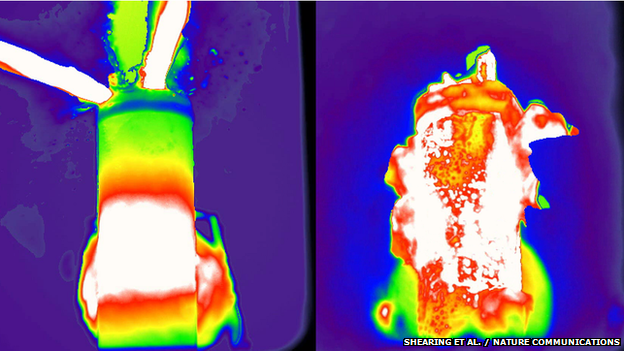
Thermal cameras captured molten jets shooting out of the batteries (left) and their deterioration (right)
Engineers have produced a detailed 3D view of overheated lithium-ion batteries failing and exploding.
Two batteries were heated to 250C and observed using both a thermal camera and a powerful synchrotron X-ray, to trace how faults arise and spread.
The researchers stressed that these are extreme conditions that most batteries never face; they aim to help improve the safety of future battery designs.
The study is published in the journal Nature Communications, external.
"We all walk around with lithium-ion batteries in our pockets every single day - and by and large, nothing goes wrong," said senior author Paul Shearing, from University College London.
"We're very positive about these batteries. But we're also conscious of the fact that as we move from iPhones and digital cameras and laptops, to things like aerospace batteries and aeronautical batteries and electric vehicles - these batteries are operating in more and more demanding conditions."
Dr Shearing and his colleagues want to understand exactly how lithium batteries fail, to help design safety features for "the absolute worst-case scenario".
Previous research has largely been limited to post mortem-type analysis of the charred remains of a failure. This team wanted to watch events unfold.
"People have looked before and after, but the exciting stuff happens very very quickly, so you need very fast imaging capabilities to be able to look at it in detail," Dr Shearing said.
So the team took their batteries to the European Synchrotron Research Facility in Grenoble, France. This huge particle accelerator produces strong X-rays that allowed the team to look right inside the batteries, while they studiously exceeded the manufacturer's safety instructions.
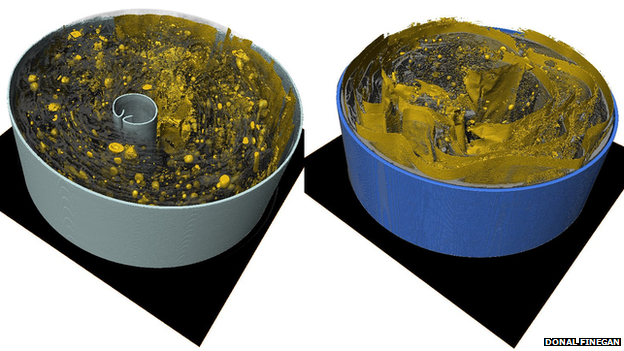
3D reconstructions show melted copper (gold globules) and degraded layers inside the two cells
Two commercial lithium cells were placed on a special rotating platform and targeted with a heat gun for several minutes, until deliberate disaster struck. The constant spinning allowed the synchrotron X-ray to view the batteries from all angles and build up an evolving picture of the meltdown.
"We could watch the materials start to break down inside the battery, in three dimensions," said first author Donal Finegan, a PhD student in Dr Shearing's laboratory.
A thermal camera also recorded live footage of the batteries gradually warming up and then exploding, external.
'Trail of destruction'
The key moment the engineers wanted to observe was "thermal runaway", where so much heat is produced that it causes an escalating chain reaction. It took 161 seconds to reach this point inside one battery, and 217 seconds in the other.
The second battery had a cylindrical support built into its core, which the results show could offer a "huge advantage" under these extreme conditions, Mr Finegan said.
But crucially, the high-speed, 3D analysis revealed unseen details of how the thermal runaway begins and spreads.
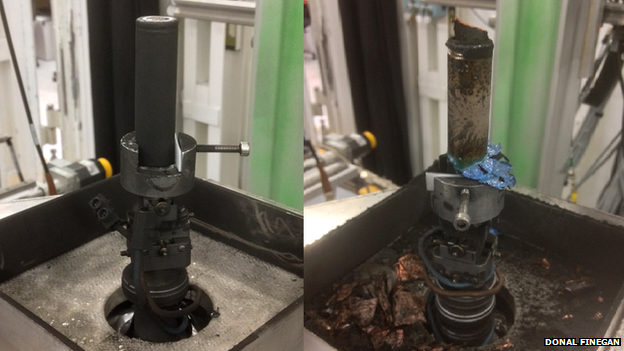
Before and after: The batteries were subjected to deliberate failure and "thermal runaway"
At a certain point, components begin to break down and pockets of gas appear. "This is where the thermal runaway is starting," Dr Shearing said. This spreads from point to point as the footage rolls on.
"There's a sort of trail of destruction through the battery. You can see the electrodes crumbling and falling to pieces, and when it gets to really high temperatures you see metal components melting within the battery."
This molten metal indicates temperatures higher than 1000C, he explained.
Once this happens, the battery does not last long. In both cases, molten contents spewed out of the cells' vents, designed to release gas in a less catastrophic failure.
The battery without an internal support actually blew its top, external.
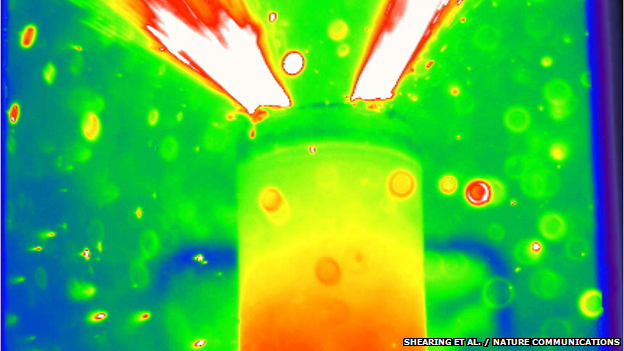
Molten metal was ejected from the batteries' vents
There were some tense times surrounding those key, explosive moments, Dr Shearing said.
"I remember at one point, even through the thick lead-lined door, we heard an explosion happening. That was very exciting because we knew that we were recording the X-ray data at the point when that explosion had happened.
"That was followed by a period of tens of minutes when we had to wait, before it was safe to go back inside this lead-lined experimental station."
Watching nervously on CCTV, he and his colleagues couldn't tell whether all the instruments were still intact. "We were anxious to get back in, recover the battery and make sure that we hadn't damaged anything."
Now they have their first findings, the team is analysing more experiments in which they subjected batteries to different types of mistreatment - electrical instead of thermal overload, for example.
And they don't want to stop there. They think their method could be useful for blowing up, and improving, various types of battery in the future.
"We've demonstrated this as a capability that could be more widely applied to different batteries, with different geometries and chemistries, and under different extreme conditions," Dr Shearing said.
Follow Jonathan on Twitter, external
- Published3 March 2015
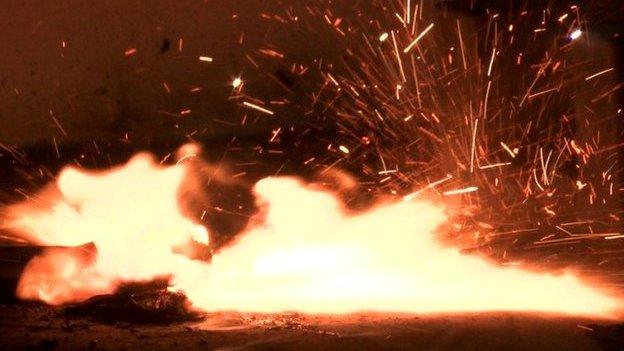
- Published7 April 2015
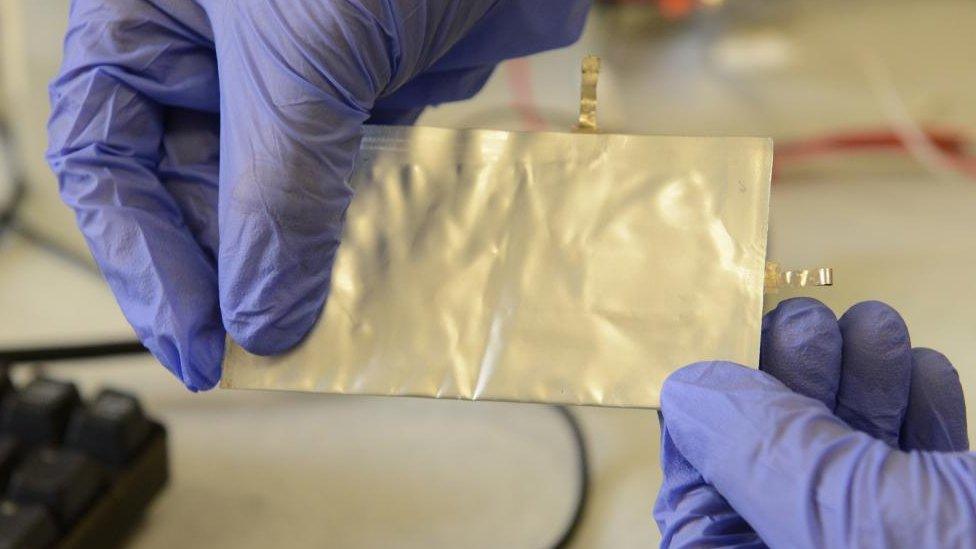
- Published3 November 2014

- Published4 February 2014

- Published4 February 2014

- Published17 January 2013
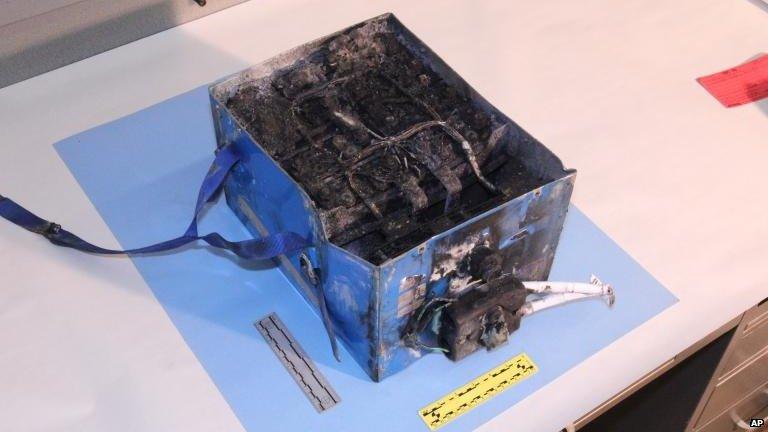
- Published8 January 2013
